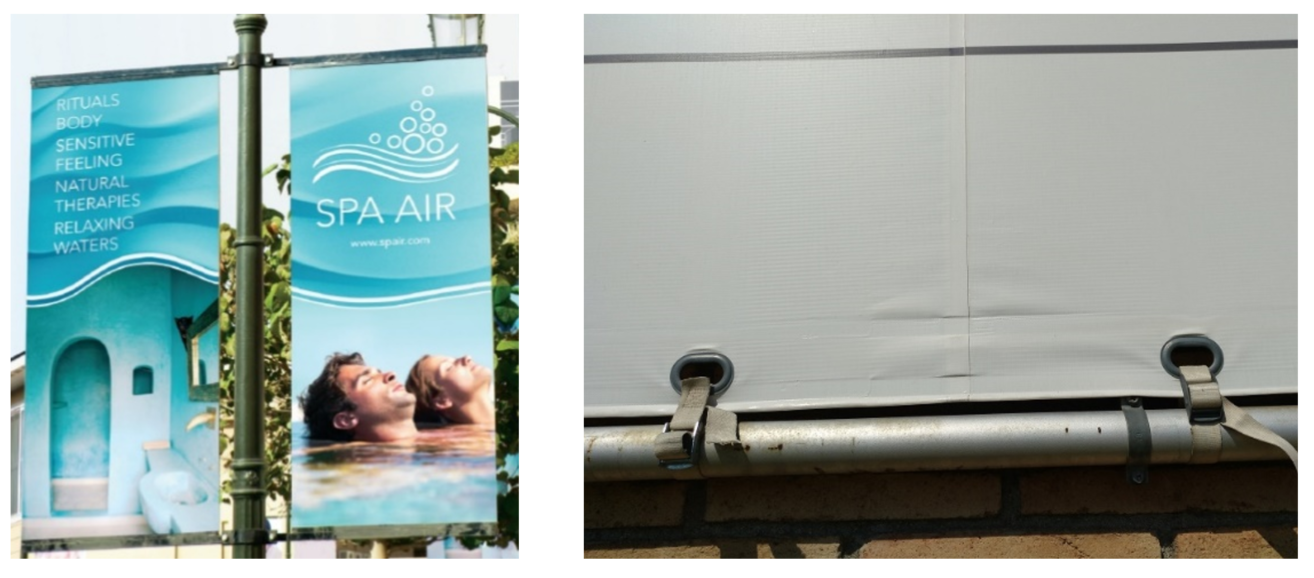Recommendations on welding and sewing banners printed with HP Latex

This article considers the most common welding methods and their interaction with HP Latex prints.

When welding PVC Banners, the media surface is brought to its melting point, the PVC on each of the faces being welded together mixes and solidifies rapidly as the heat source is removed. As a result, the two faces are physically bonded.

PVC aside, other materials, like Polyester, can also be welded using a bonding tape which melts during the welding process and adheres to both surfaces to be joined.
Welding is most commonly used for banners, but other applications, such as window blinds, often involve welding as well.
Welding methods and recommendations
Welding techniques differ in the way they apply energy to the material in order to melt it. Some welding techniques apply heat directly to the material (using a hot wedge or by blowing hot air), while others rely on the heating of the media to certain electromagnetic stimuli (“High Frequency” and “Electric Impulse” techniques).
The “pros and cons” of each welding technique are summarized in the following table:

Like with any ink using conductive black pigments, when using high-frequency welding, it is recommended to create black using a combination of black and colored inks to minimize the risk of burned-out welds. This is achieved by using ICC profiles with low GCR value; which can be set up during ICC profile creation in the RIP.
Stronger bonds are obtained when joining the unprinted faces of the substrate rather than printed ones. To this purpose, most RIPs allow to easily set white bleeding margins; for example, in Onyx, you may select “Bleeding Type: Color” and select “White” as the Bleed Color. Adding marks allows easy cut and preparation of the sample to be welded. These options are shown in the following video: https://youtu.be/uS2fQv3RbtE
Sewing
Sewing can be an alternative to welding. To ensure that the prints are not damaged or scratched while they are sewn together, it is recommended that the parts in contact with the prints were made of plastic (instead of metal) or covered with plastic protectors. Polyester yarns are also recommended over alternative options.

MATIC finishing products have been proven to deliver optimal cutting and welding performance, while preserving the Image Quality of HP Latex prints and the media properties, both in polyester fabrics and PVC screens.
Visit www.matic.es for more information about their products for welding, sewing, and cutting.















